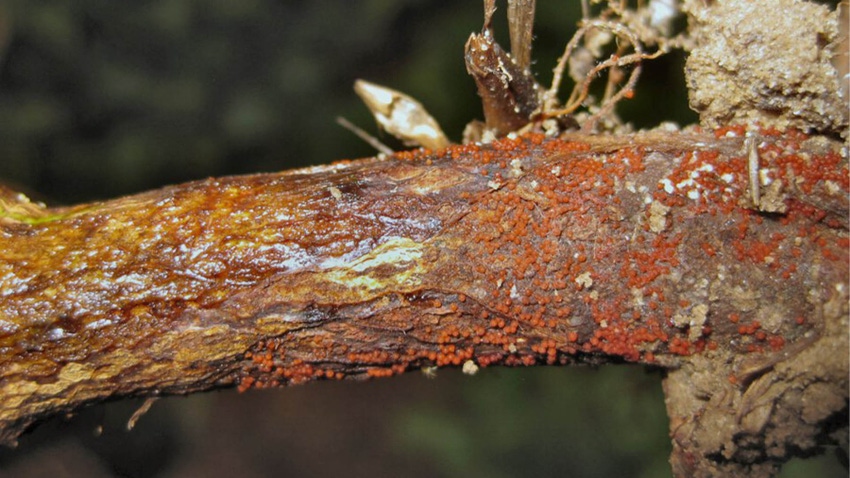June 20, 2023

Source: Corteva Agriscience
Causing deterioration of soybean stems and roots, as well as premature aging, red crown rot can give farmers headaches throughout the growing season. Red crown rot is a common southern U.S. fungal disease, but is now spreading to the Midwest.
Red crown rot infection is often detected after the R3 stage with the appearance of yellowing on the leaves. Because symptoms are similar to other common soybean diseases, such as sudden death syndrome, brown stem rot, and southern stem canker, inspection of the stems and roots is necessary to determine the causal pathogen. However, root and stem rot can occur without producing foliar symptoms.
“Correctly identifying crown rot is a big deal as we try to manage it and get it under control,” said Pioneer Field Agronomist Scott Eversgerd. “If you aren’t experienced with red crown rot, it’s best to send a sample to a lab so we know exactly what we’re dealing with.”
The key distinguishing characteristic of red crown rot is the presence of perithecia on the crown and roots just below the soil line. This often presents as tiny red balls and will give the crown a reddish color. Other factors can cause a reddish coloration of the lower stem, so it is important to look closely to confirm the presence of fungal tissues.
Yield losses of 30% have been documented with red crown rot infections in soybeans in Louisiana and Mississippi, where the disease has been present for years. Severely infected areas can be significantly impacted; however, red crown rot usually only affects patches within a field.
Management options are limited and no known rescue treatments are available to mitigate plant damage and yield impact once infection has been detected. Delaying soybean planting in fields known to be infested with the soil-borne pathogen Calonectria ilicicola can help reduce the severity of infection.
Improved soil drainage and management of root-feeding insects and nematodes can also help reduce the impact of red crown rot.
You May Also Like




